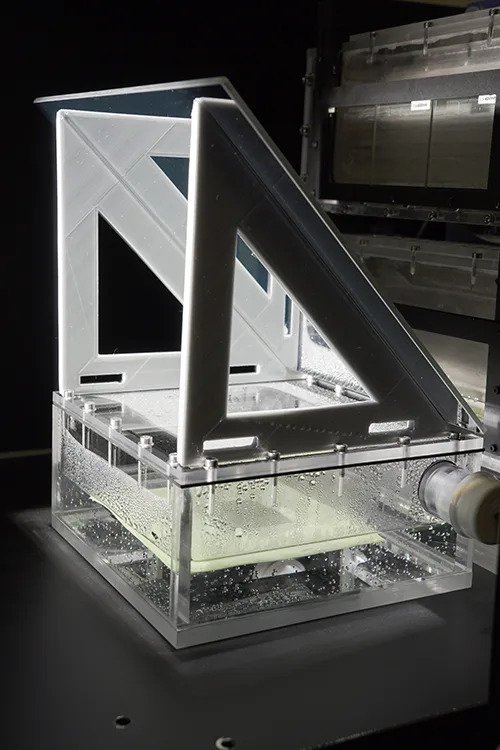University of Cambridge researchers have designed ultra-thin, leaf-like devices that produce green hydrogen from water splitting. The floating photoelectrochemical devices showed a 0.58% solar-to-hydrogen efficiency.
“With further development, we expect the floating leaves to match the performance of state-of-the-art artificial leaf prototypes, which is about 5-10% for solar to hydrogen production,” researcher Virgil Andrei told pv magazine.
The scientists assembled the 1.7 cm2 lightweight artificial leaves by attaching perovskite photocathodes to bismuth vanadate (BiVO4) photoanodes with a contact adhesive. They deposited the lead halide perovskite photocathodes onto indium tin oxide (ITO)-coated polyethylene terephthalate (PET) films. They then covered the resulting perovskite-BiVO4 photoelectrochemical devices with micrometer-thin, water-repellent carbon-based layers to prevent moisture degradation and water infiltration.
The artificial leaves can split water into hydrogen and oxygen or reduce CO2 to syngas.
“The current leaves can either develop hydrogen or syngas, depending on the catalyst choice,” said Andrei. “The devices are quite versatile, allowing us to easily integrate different catalysts for a range of products.”
The leaves produced visible carbon monoxide and hydrogen bubbles in a symmetric design during operation, which was key to maintaining balance while floating, the scientists said. Outside of the lab, lightweight reactors facilitated gas collection to aid floating during outdoor testing.
The devices show the potential to be scaled, noted the scientists. They said they produced larger-scale 100 cm2 samples with a comparable performance and stability to their 1.7 cm2 counterparts.
“We showed that the lightweight devices are compatible with modern, large-scale fabrication techniques. However, specialized equipment will be required to prepare these leaves on a square-meter scale,” Andrei said. “Acquiring such equipment and optimizing the deposition may take 5 years. Once these large-scale prototypes are manufactured and pass certain stability and performance standards, commercial products can become available within a few years.”
The scientists introduced the new hydrogen tech in “Floating perovskite-BiVO4 devices for scalable solar fuel production,” which was recently published in Nature.

Image: University of Cambridge/Virgil Andrei
This content is protected by copyright and may not be reused. If you want to cooperate with us and would like to reuse some of our content, please contact: editors@pv-magazine.com.



By submitting this form you agree to pv magazine using your data for the purposes of publishing your comment.
Your personal data will only be disclosed or otherwise transmitted to third parties for the purposes of spam filtering or if this is necessary for technical maintenance of the website. Any other transfer to third parties will not take place unless this is justified on the basis of applicable data protection regulations or if pv magazine is legally obliged to do so.
You may revoke this consent at any time with effect for the future, in which case your personal data will be deleted immediately. Otherwise, your data will be deleted if pv magazine has processed your request or the purpose of data storage is fulfilled.
Further information on data privacy can be found in our Data Protection Policy.